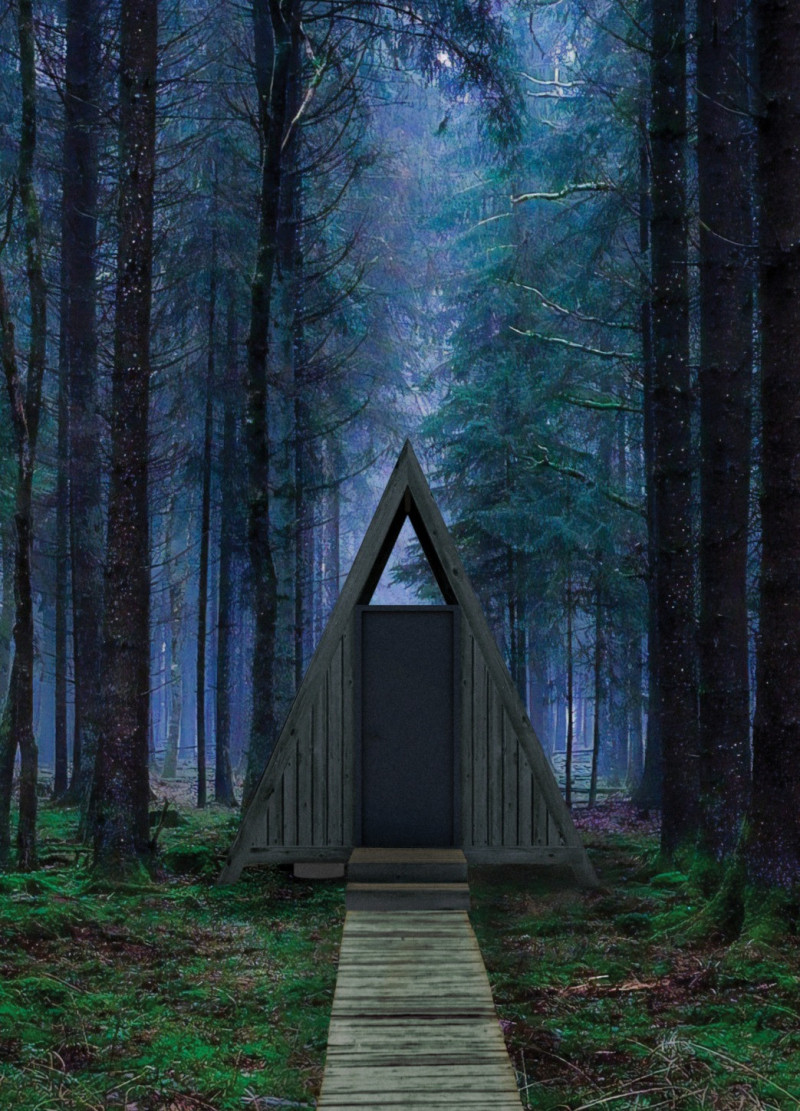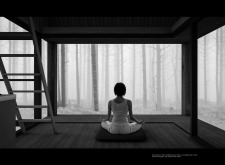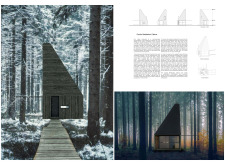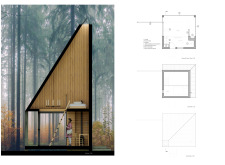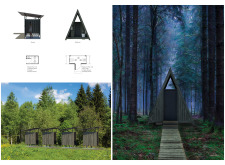5 key facts about this project
The Ozolini Meditation Cabins present a contemporary take on the traditional Latvian hut, located in a peaceful woodland area. Designed for silent meditation, the cabins aim to create a strong connection with nature while incorporating sustainable elements. The concept revolves around providing a tranquil space where visitors can reflect and unwind, all while being surrounded by the beauty of the forest.
Design Concept
The cabins utilize passive stack ventilation to enhance air circulation naturally. The pitched roof, set at a 19:12 angle, features an operable skylight. This design allows for natural light to enter the space while also enabling control over ventilation. During warm months, users can open the skylight to let fresh air in, while in winter, a small wood-burning stove keeps the interior warm and comfortable.
Spatial Organization
Inside, the layout includes two main meditation areas. The ground floor offers an indoor/outdoor space with two sliding glass doors that connect directly to the landscape. An L-shaped deck provides a place to enjoy the outdoors, with a removable mosquito net for added comfort against insects. This thoughtful arrangement encourages visitors to engage with the natural environment.
Functional Amenities
In addition to meditation areas, the ground floor includes a small open-air kitchenette. This kitchen features a sink for washing and cooking burners, alongside storage for food and utensils. A gravity-fed water tank supplies the sink, keeping the design straightforward. The lighting consists of a candle chandelier that adds warmth, and there is a hanging kerosene lamp near the desk for practical use.
Environmental Integration
To reduce environmental impact, the project incorporates a trail made from raised wood planks. This pathway ensures guided access to the cabins and toilets while helping to prevent erosion in the surrounding area. The dry toilets are designed as A-frame structures, with screens to keep insects and animals out, merging functionality with respect for nature.
The wood used for the cabins is sourced from the local forest and treated using the Shou Sugi Ban method. This technique, which involves scorching the wood's surface, enhances durability and requires less maintenance. Such a choice reflects a commitment to sustainability and encourages a close relationship between the cabins and their forest setting.


